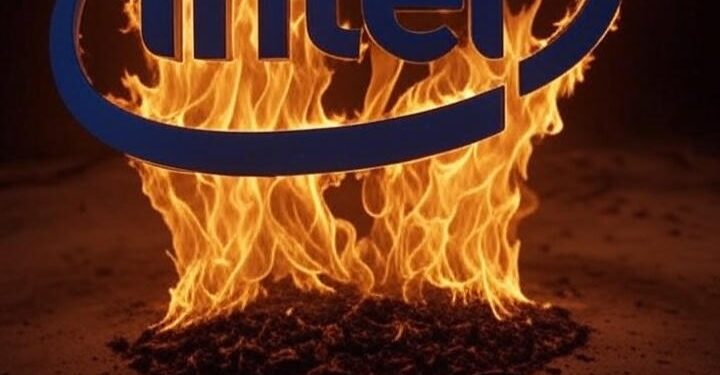Login to Continue Learning
In a testament to how far Intel, the semiconductor industry’s former giant, has fallen, Fitch has downgraded its credit standing to just two notches above junk status. This move mirrors similar steps taken by Moody’s and S&P Global in 2024.
Fitch has lowered Intel’s long-term debt rating from BBB+ to BBB, with a negative outlook, indicating further potential for downgrade. BBB is the last rung of what Fitch calls an “investment grade” rating.
Meanwhile, Fitch has affirmed its F2 rating for Intel’s short-term debt, suggesting good intrinsic capacity for timely payment.
Fitch notes in its commentary that credit metrics remain weak and will require both stronger end markets and successful product ramps, along with net debt reduction over the next 12 to 24 months, to return EBITDA leverage to levels consistent with ratings.
The credit rating agency has identified several critical factors behind today’s re-rating for Intel:
1. **Delayed De-leveraging:** In 2024, Intel had an EBITDA leverage of 5.0x, expected to decline to 4.0x in 2025 and 2.5x by 2027.
2. **Improving Manufacturing Yields and Customer Uptake:** Over the next 18 months, improving manufacturing yields and customer adoption of Intel’s 18A process will determine the company’s ability to stabilize market share, expand profit margins, and attract external foundry customers.
3. **Cost-Cutting Measures:** Aggressive cost-cutting has reduced operating expenses from $19.4 billion in 2024 to $17 billion in 2025 and $16 billion in 2026.
4. **EBITDA Margin Increase:** EBITDA margin is expected to rise above 30% in 2026, compared to around 20% in 2024.
5. **Cash Proceeds from Sales:** The sale of common stock in Mobileye and a majority stake in Altera should generate approximately $7.2 billion over time, offsetting restructuring-related cash outflows.
6. **Trade-Related Headwinds:** Intel has issued muted guidance for 2H 2025 due to trade-related challenges, despite demand pull-ins in the first half of the year.
7. **Reducing Capital Intensity:** By reducing CapEx on its next-gen 14A process, Intel aims to improve its capital intensity metric but risks damaging long-term revenue growth prospects.
8. **Increased Competition:** Intel faces increased competition from Qualcomm Inc. and AMD in PCs.
9. **AI Limitations:** In the near term, Intel’s product lineup will limit its ability to benefit from robust AI growth.
Intel’s turnaround strategy under CEO Lip-Bu Tan focuses on regaining market share through advanced process technology advancements. However, it plans to switch to its next-gen 14A node only if it secures customer commitments. Additionally, Tan aims to rejuvenate Intel’s x86 ecosystem via Panther Lake and Nova Lake CPUs and support for Simultaneous Multi-Threading (SMT).
To reduce overheads, Intel is slashing its workforce by 15% from its previous strength of 99,500 as of the end of 2024. The company has already reduced jobs by 30,000 in 2023 and 2024, and it plans to close plants in Germany and Poland.
For those unfamiliar with Intel’s strategy, CEO Lip-Bu Tan is focusing on regaining market share through accelerated process technology advancements, while also trying to rejuvenate the x86 ecosystem.
📚 Reading Comprehension Quiz
What is the current long-term debt rating of Intel according to Fitch?
Please login or register to take the quiz and earn points!



















